Springfield Armory 1911 45ACP 4" LightWeight Champion Operator PX9115LP For Sale
$799.97
The Springfield Armory 1911 45ACP 4″ LightWeight Champion Operator PX9115LP exemplifies a fusion of tradition and innovation in firearms, being the first 1911 to incorporate an accessory rail into its frame. This makes it highly versatile, especially with its compact 4-inch barrel and slide design, ideal for concealed carry or tactical use in low-light conditions. The pistol enriches the classic 1911 framework with modern enhancements, including a beavertail grip safety, extended ambidextrous thumb safeties, and a Lightweight Delta hammer for improved handling. Its 3-Dot tritium combat sights assure usability in any lighting, and features like a lowered ejection port, match-grade barrel, and a dual-captive recoil system ensure reliability. Its Armory Kote finish adds durability, making it a robust choice for both day and night applications, whether concealed or stationed with a tactical light on a nightstand.
Why do 1911s jam so much?
The 1911 pistol, particularly older or lower-quality models, can experience jamming for several reasons:
1. **Tight Tolerances**: The original design of the 1911 often features tight tolerances, which can be sensitive to dirt, debris, or carbon buildup, leading to potential jams if not properly maintained.
2. **Ammunition Sensitivity**: The 1911 was originally designed to work with .45 ACP military ball ammunition. Using different types of ammo, especially those with varying case lengths or bullet shapes, can affect reliability.
3. **Magazine Issues**: Reliability problems can often be traced back to the magazine. Worn-out springs or out-of-spec feed lips can cause feeding issues that result in jams.
4. **Breech Face Angle**: Variations in the breech face angle can affect the way rounds feed into the chamber and potentially cause jams.
5. **Extractor Problems**: An improperly tuned or damaged extractor can fail to properly remove spent casings, causing feed failures or double feeds.
6. **Maintenance and Lubrication**: Regular cleaning and appropriate lubrication are essential; neglect can lead to operational issues like jamming.
7. **Spring Tension**: The recoil and magazine springs can wear out or become improperly tensioned over time, leading to cycling issues.
8. **Aftermarket Modifications**: Some modifications, especially if not done properly, can adversely affect the performance and reliability of the firearm.
To minimize jamming, it’s crucial to maintain the pistol properly, use quality magazines, and ensure compatibility with the ammunition being used.
What 1911 did Chris Kyle use?
Chris Kyle used a Springfield Armory TRP (Tactical Response Pistol) Operator 1911 during his service as a Navy SEAL sniper.
Is a 1911 better than a Glock?
The question of whether a 1911 is better than a Glock depends on various factors, including personal preference, intended use, and specific requirements. Here are some points to consider:
1. **Design and History**:
– **1911**: Known for its classic design and historical significance, the 1911 is a single-action, semi-automatic pistol that has been in use for over a century.
– **Glock**: Known for its modern design, Glocks are striker-fired pistols that are widely used by law enforcement and military worldwide.
2. **Trigger Mechanism**:
– **1911**: Has a single-action trigger that many shooters find to be crisp and smooth, often preferred for precision shooting.
– **Glock**: Features a “Safe Action” striker-fired mechanism, offering a consistent trigger pull but typically longer and heavier than a 1911’s.
3. **Ergonomics and Customization**:
– **1911**: Highly customizable with a wide range of aftermarket parts available, allowing for significant personalization.
– **Glock**: Also customizable, but with less traditional modification options compared to the 1911.
4. **Capacity and Weight**:
– **1911**: Traditionally has a lower magazine capacity (usually 7-8 rounds) and is often heavier due to its metal construction.
– **Glock**: Typically offers higher magazine capacity and is lighter due to its polymer frame.
5. **Reliability and Durability**:
– Both firearms are known for their reliability, though Glocks are often cited for their ruggedness and ability to function in adverse conditions.
6. **Cost**:
– **1911** models can range widely in cost, especially custom models, which can be quite expensive.
– **Glock** pistols are generally more affordable.
Ultimately, the choice between a 1911 and a Glock comes down to personal preference, what the user values in a firearm, and the specific use case, whether it be for self-defense, competition, or collection.
What is the weakness of the 1911?
The M1911 pistol, while a reliable and time-tested firearm, has a few weaknesses:
1. **Low Magazine Capacity**: Typically holds 7 or 8 rounds, which is lower than many modern handguns.
2. **Weight and Size**: Often heavier and bulkier compared to modern polymer-framed pistols.
3. **Maintenance**: Requires regular maintenance and cleaning to ensure reliability.
4. **Recoil**: The single-action trigger and powerful .45 ACP round can produce more recoil, which may affect accuracy for some shooters.
5. **Complex Disassembly**: The takedown process is more complicated than that of many newer handguns.
These factors can be seen as disadvantages depending on the shooter’s needs and preferences.
What pistol is known for jamming?
The Walther P38 is historically known for having jamming issues, especially in early models produced during World War II. Maintenance issues and the use of various types of ammunition sometimes contributed to these problems.
What is the most common problem with the 1911?
The most common problem with the 1911 pistol is typically related to feeding issues. These can arise from various factors such as magazine malfunctions, improper ammunition, or extractor tuning issues. Regular maintenance and using quality magazines and ammunition can help mitigate these problems.
What 1911 does the FBI use?
The FBI has used the Springfield Armory Professional 1911 as part of their standard issue for certain specialist units. This firearm is a custom-grade 1911 designed to meet the precise requirements set by the FBI’s Hostage Rescue Team and regional SWAT teams.
What caliber did Chris Kyle make his longest shot with?
Chris Kyle made his longest confirmed kill shot with a McMillan TAC-338 sniper rifle chambered in .338 Lapua Magnum.
Did Chris Kyle shoot a sniper?
Yes, Chris Kyle, a former U.S. Navy SEAL sniper, is credited with shooting and killing enemy snipers during his military service. He was known as one of the most effective and lethal snipers in American military history.
Are 1911s high maintenance?
Yes, 1911s are often considered high maintenance compared to some modern firearms. They usually require regular cleaning and lubrication to ensure reliable performance, and due to their intricate design and tight tolerances, some models may require tuning or adjustment to function smoothly. Proper maintenance and attention can help in keeping a 1911 operating effectively.
Is a striker fired better than a 1911?
The preference between a striker-fired pistol and a 1911 depends on individual needs and preferences, as both have their advantages and disadvantages. Here are some factors to consider:
1. **Trigger Feel**:
– Striker-fired pistols often have a consistent trigger pull without the transitioning found in double-action/single-action (DA/SA) pistols.
– The 1911 typically has a single-action trigger, which is known for being crisp and smooth, often superior to many striker-fired models in terms of precision.
2. **Safety Features**:
– Striker-fired pistols may lack manual safeties, relying on trigger safeties instead, though some models do have manual safeties.
– The 1911 usually has a manual thumb safety and a grip safety, offering more redundant safety mechanisms.
3. **Size and Weight**:
– Striker-fired guns often come in polymer frames, making them lighter and more suitable for everyday carry.
– The 1911 is often heavier, being traditionally made of steel, which can aid in recoil management but may not be as comfortable to carry.
4. **Customization and Capacity**:
– Striker-fired pistols, like the Glock or Smith & Wesson M&P series, often have larger standard capacities and a plethora of aftermarket parts available for customization.
– The 1911 can be customized extensively as well but tends to have lower magazine capacity due to its single-stack design.
5. **Reliability**:
– Both systems are generally reliable, but the simpler design of striker-fired pistols might offer an edge in certain adverse conditions.
6. **Historical and Aesthetic Appeal**:
– The 1911 is iconic and has a long, storied history, which appeals to many enthusiasts and collectors.
– Striker-fired pistols are more modern and often designed with practicality in mind.
Ultimately, “better” is subjective and based on what features are most important to the user. If possible, testing both types at a range can help determine which suits you best.
What pistol do Navy SEALs prefer?
Navy SEALs have historically used the SIG Sauer P226 as their preferred pistol. In recent years, they have also adopted the Glock 19 for certain missions, appreciating its reliability and lighter weight.
How often do 1911s jam?
The reliability of a 1911 pistol, like any firearm, can vary based on several factors, including the manufacturer, the quality of the firearm, the ammunition used, and how well the firearm is maintained. Generally, well-made 1911s that are properly maintained and fed with quality ammunition tend to be quite reliable and should not jam frequently. However, lower-quality models or those that are not well-maintained may experience more frequent jams. Regular cleaning and using proper ammunition can help minimize the risk of jamming.
Do 1911s jam with hollow points?
The reliability of a 1911 handgun with hollow point ammunition can vary based on several factors, including the specific model of the 1911, the manufacturer of the ammunition, and the condition of the firearm. Generally, some older or more traditional 1911 models can experience feeding issues with hollow point bullets due to their design, which was originally intended for full metal jacket (FMJ) rounds. However, many modern 1911s have been updated or come equipped to handle hollow points more reliably.
If you’re experiencing jamming issues, it might be worth considering:
1. **Polishing the feed ramp:** Sometimes smoothing the feed ramp can help the rounds load more smoothly.
2. **Using high-quality ammunition:** Some brands or batches of ammunition might perform better in your specific firearm.
3. **Regular maintenance:** Keeping your firearm clean and well-lubricated can help prevent jams.
4. **Consulting a gunsmith:** If reliability issues persist, seeking professional advice can be beneficial.
Always ensure any modifications or maintenance are done safely and in accordance with the law.
Does a 1911 have a lot of recoil?
The recoil of a 1911 pistol, which typically fires .45 ACP ammunition, is generally considered to be moderate. It is manageable for most shooters, particularly because of the 1911’s all-metal construction and weight, which help absorb some of the recoil. However, recoil perception can vary depending on the shooter’s experience and physical build. Overall, many find the 1911’s recoil to be quite controllable with practice.
| Sights | Low Profile Combat, 3 – Dot Tritium |
|---|---|
| Overall Length | 7.6" |
Be the first to review “Springfield Armory 1911 45ACP 4" LightWeight Champion Operator PX9115LP” Cancel reply
Related products
Springfield Armory 1911
Springfield Armory 1911 .45 ACP Mil-Spec Parkerized Handgun – PB9108LP
Springfield Armory 1911
Springfield Armory 1911 45ACP 4" LightWeight Champion Operator PX9115LP
Springfield Armory 1911
Springfield Armory 1911 5" .45ACP Stainless Steel Full Size PB9151LP
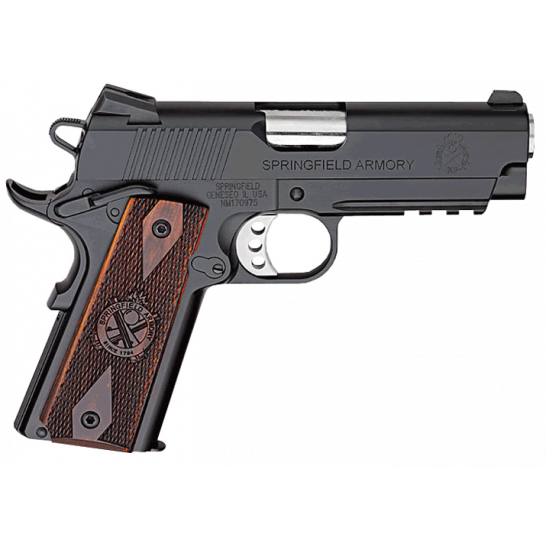
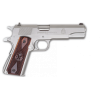
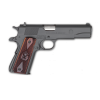
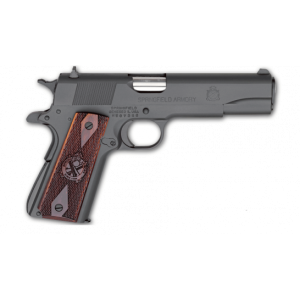
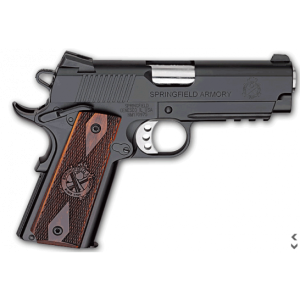
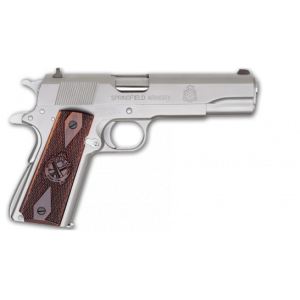
Reviews
There are no reviews yet.